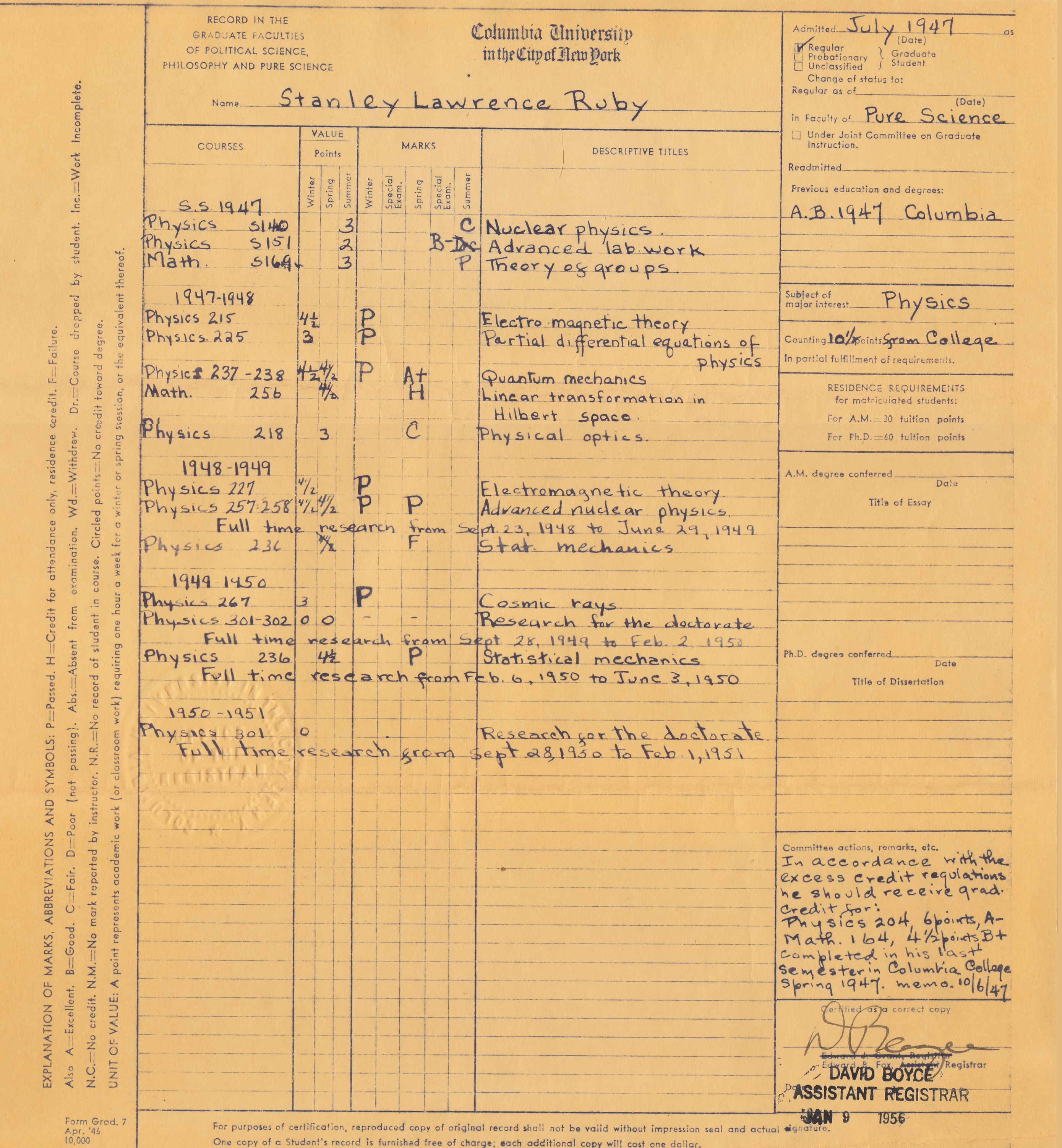The uranium recovery project was ramping up just as Stan finished his graduate studies
Way back when, I posted Stan's two-page undergraduate Columbia transcript, but I see now that I did not post a third page detailing his graduate studies. Okay, so here it is now. Notice that he finished his last semester of full-time research toward the doctorate on February 1, 1951.
At that point, he still had a dissertation to write, but he also had a family (Walter was a year old) and he needed an income while also working on the thesis. Maybe there wasn't funding available at that time from the physics department.
We know that in 1950 Professor Hassialis from the Columbia School of Mines had launched the Atomic Energy Project for the Recovery of Uranium, a program at Columbia funded by the U.S. government that would grow to employ 125 scientists and engineers.
That was the group that was hiring in February 1951 when Stan was looking for work. Yes, the work was in the field of surface chemistry, far outside his expertise, but it involved work using radioactive samples and there Stan had some relevant background.
Most of the AEP-RU work took place on campus, probably at the School of Mines. But at least one of the project scientists, an R.Christian Anderson, was stationed at Brookhaven labs using the research reactor there for project work. Given his nuclear experience, Stan was apparently offered the opportunity to go to Brookhaven for a year and work together with Anderson.
And so it was that in June 1951 that Stan, Helga and baby Walter moved into graduate student housing at Brookhaven and Stan took up his post in the chemistry department.
I'm pretty sure Stan didn't like the work. This was applied science, not the sexier pure physics he had trained in. It was not about learning the fundamental truths of the universe, but devising a better technique for surface adhesion.
But more than that, the work was weapons-related—not in any direct way, but it was funded as part of a project to make the production of nuclear fuel more economical. Yes, that might benefit the long-term development of nuclear power for peaceful purposes, which Stan supported. But the immediate goal was to streamline the processing of uranium ore for nuclear weapons development, which he did not.
As a young physicist in 1951, not yet six years since Hiroshima, Stan felt a burden of responsibility for this terrible new power that his profession had unleashed upon the world. I think he was already active in the Federation of American Scientists by this time, but I need to do more research on that.
At any rate, he was not comfortable with the idea of himself becoming a part of the weapons establishment, and I imagine that ambivalence made his first year at Brookhaven less than a delight. During this period, he worked evenings on the thesis, but possibly was making slow progress.
Of course, he remained in touch with Wu and at some point during the year, he learned that he would get physics department funding the next year, starting July 1, 1952, and that he would transfer into the Brookhaven physics group.
Possibly Wu already knew that she wanted Ruby to work on the helium recoil experiment. It would be useful to her to have someone already on hand at Brookhaven to work on that pending research.

